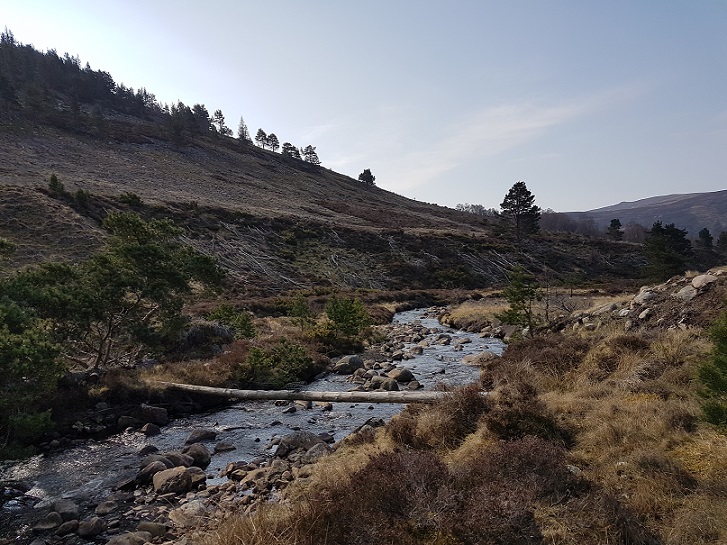
It’s now four years since I wrote about the potential for landscape scale conservation (see here) and the problem of bulldozed tracks (see here) on the Dinnet Estate. I have been meaning to explore the area further ever since so I was pleased recently to be sent some photos of the way the land is being managed around the Lary Burn, not far from the A939 which runs north west from Ballater through Glen Gairn (approx Grid Reference approximate grid ref is NJ 337 004).
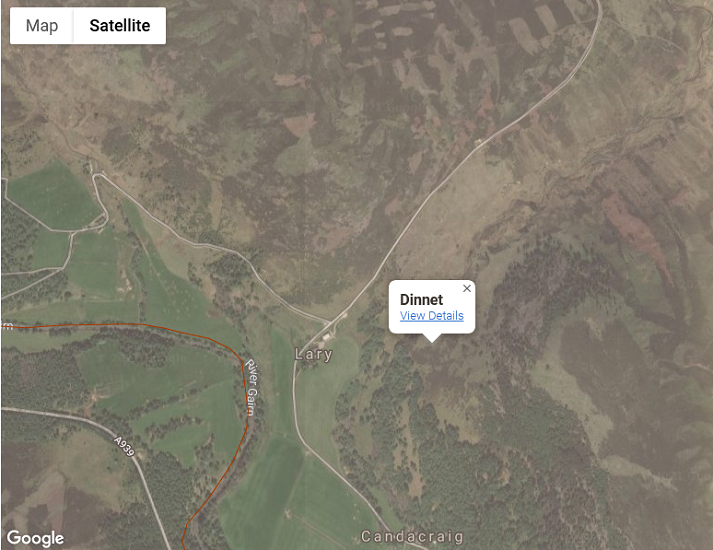
The photos provide a graphic illustration of the destructive impacts of intensive grouse moor management and of why the Cairngorms National Park Authority has been failing to achieve its ambition of landscape scale conservation.
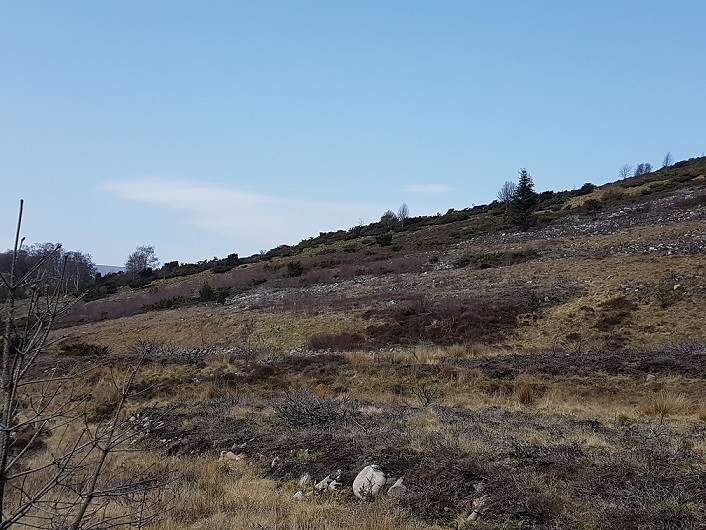
The positive side of intensive grouse moor management is that deer numbers tend to be kept very low. This allows woodland to regenerate naturally and here it’s been expanding up the hillside. There is clearly enormous potential to create a montane scrub zone, a habitat almost entirely absent from Scotland and which the Cairngorms National Park Authority is keen to promote, by natural means.
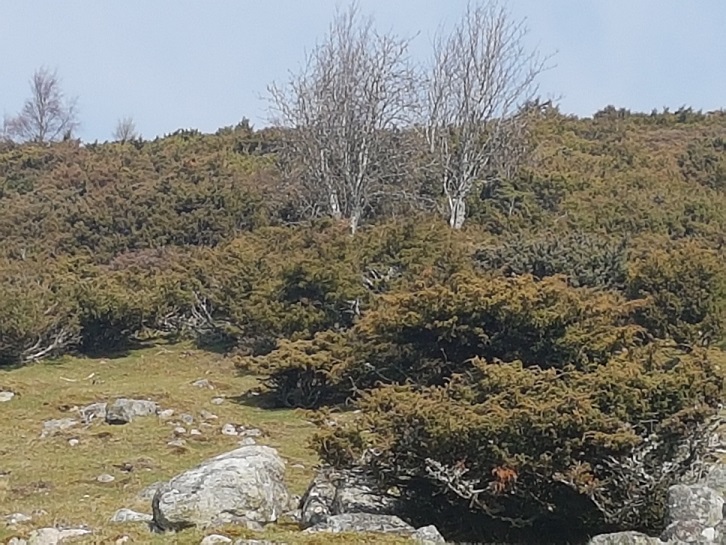
Scandalously, however, as quickly as “good areas”, such as those in the photo above, develop, others are destroyed:
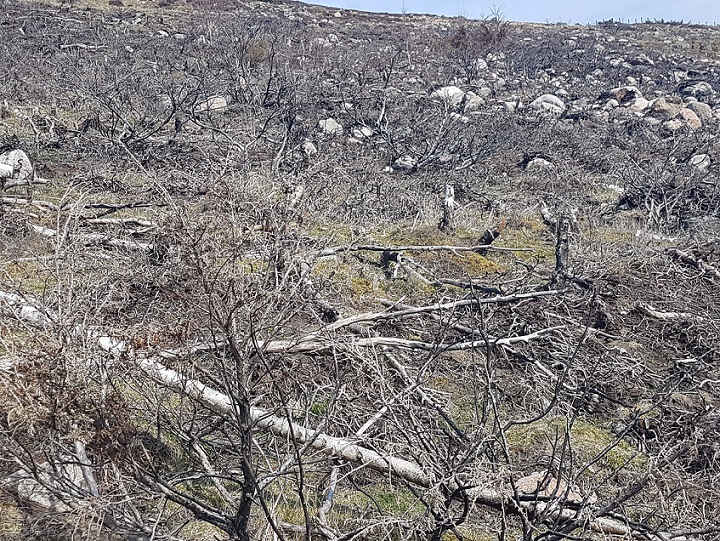
The banks of burns in the uplands tend to have mineral, rather than peat soils, and so, where grazing is low, provide great potential for woodland regeneration. The promotion of riparian woodland is another priority for the CNPA, it’s good for wildlife and can help reduce flooding, and there is clear evidence for this happening along the Lary Burn.
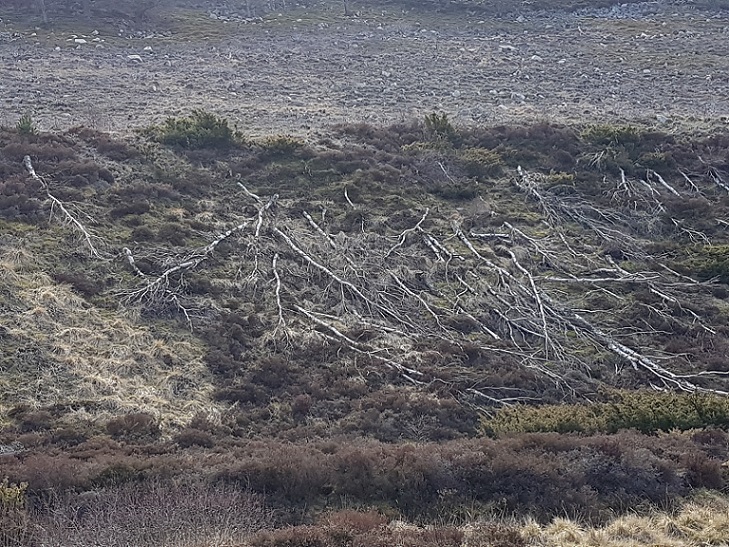
As soon as the trees that are colonising the banks start to create woodland, they are being felled. No doubt Dinnet Estate’s shooting tenants will claim this is better practice than burning to the water’s edge, as happens at Invercauld (see here). Burning destablises the banks and undermines flood prevention even further. (If you are concerned about this issue a petition to the Scottish Parliament calling for the proposed grouse moor licensing scheme to require landowners to promote natural flood prevention is open until 4th March (see here)). Butt the adverse impacts of tree felling and muirburn along river banks for carbon absorption, wildlife biodiversity and flood prevention are very similar.
Despite the massive flood damage Ballater, not far downstream from the Lary Burn, suffered in December 2015 (see here), and despite the River Gairn catchment being one of the CNPA’s target areas for woodland expansion, the destruction of woodland on the Dinnet Estate has continued.
Legitimised destruction

Part of the reason this destruction is allowed to continue lies in Scotland’s incoherent system for nature conservation. Just round the corner in the photo above, the Lary Burn is fed by the Morven burn, whose source is in the Morven Site of Special Scientific Interest (SSSI) and Special Area of Conservation (SAC):
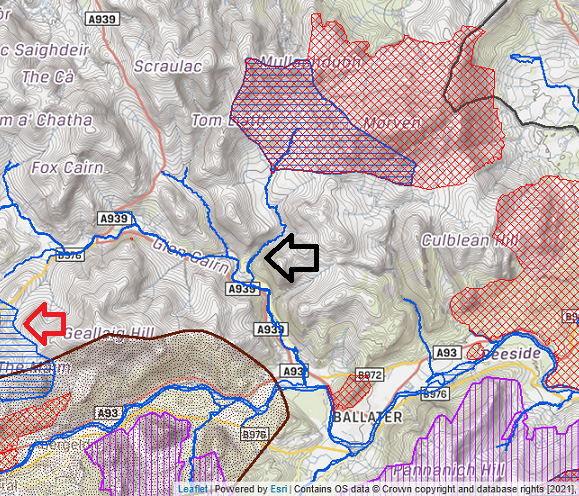
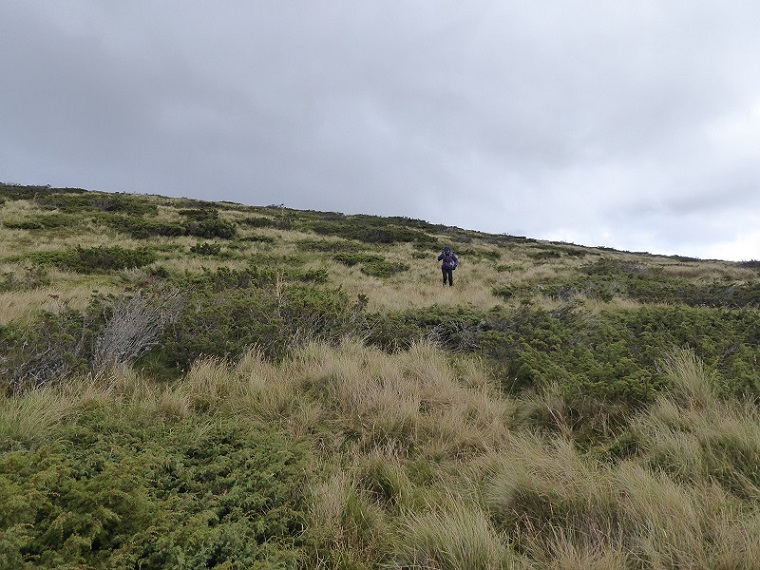
In the SSSI, the juniper is protected, but the area between that and the woodland areas near where the Lary Burn reaches the River Gairn, is burned to bits. The two areas have no chance of connecting to create conservation on a landscape scale.
The hypocrisy here is nicely is illustrated by a piece of propaganda on Mountain Hares from the Grampian Moorland Group in 2016 (The Untold Story – Mountain Hares). In this (at 4:06 minutes) the Head Keeper for Dinnet Moor, describes how keen he is to cull Mountain Hares to protect juniper in the SSSI. No mention of how the juniper lower down was expanding quite naturally until it was burned! (Another fundamental contradiction in the video is it starts by suggesting (1 min) that foxes are the main predators of mountain hare, and therefore need to be controlled, but then justifies human intervention on the grounds that there are no predators).
The wider problem, however, is that our nature protection system, which is the responsibility of NatureScot, is focused not on promoting naturally functioning ecosystems, but on preserving degraded habitats like grouse moors. This is illustrated both by the way NatureScot has tolerated shooting of mountain hare (which become officially protected year round from tomorrow) but also in the way it actually promotes muirburn in certain areas:

Across Geallaig Hill from the Lary Burn, by the B976/Old Military Rd, is the Maim Special Area of Conservation on the Invercauld Estate. It was once woodland and provides another wonderful example of the potential for natural regeneration. However, it is now, as a result of grouse moor management, one of the largest areas of what is known as H16 habitat, a mix of bearberry and heather, in Scotland. It has been protected as such, without any consideration of whether this artificially created habitat has any value for wildlife or carbon absorption from the atmosphere. As a result periodic burning of the site is not just sanctioned, but officially promoted by NatureScot.
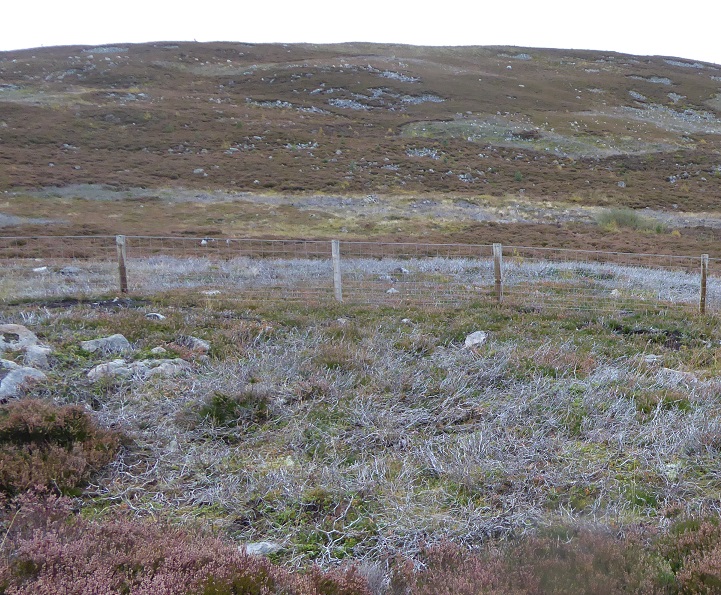
And that underpins the wider problem, once wildlife persecution or practices like muirburn are officially endorsed as legitimate means of promoting conservation in one area, its almost impossible to argue their use elsewhere. Perversely, our current system of nature conservation actually does more to conserve the interests of sporting estates than the natural environment.
The Dinnet lease and the need for Land Reform
The shooting at Dinnet Moor was leased out in November 2014 by the Dinnet Estate to Andrew Cameron Salvesen, a Director of the Game and Wildlife Conservation Trust and close friend of Prince Charles (see here). The record of the title deed held by the Registers of Scotland shows the lease is for 25 years:
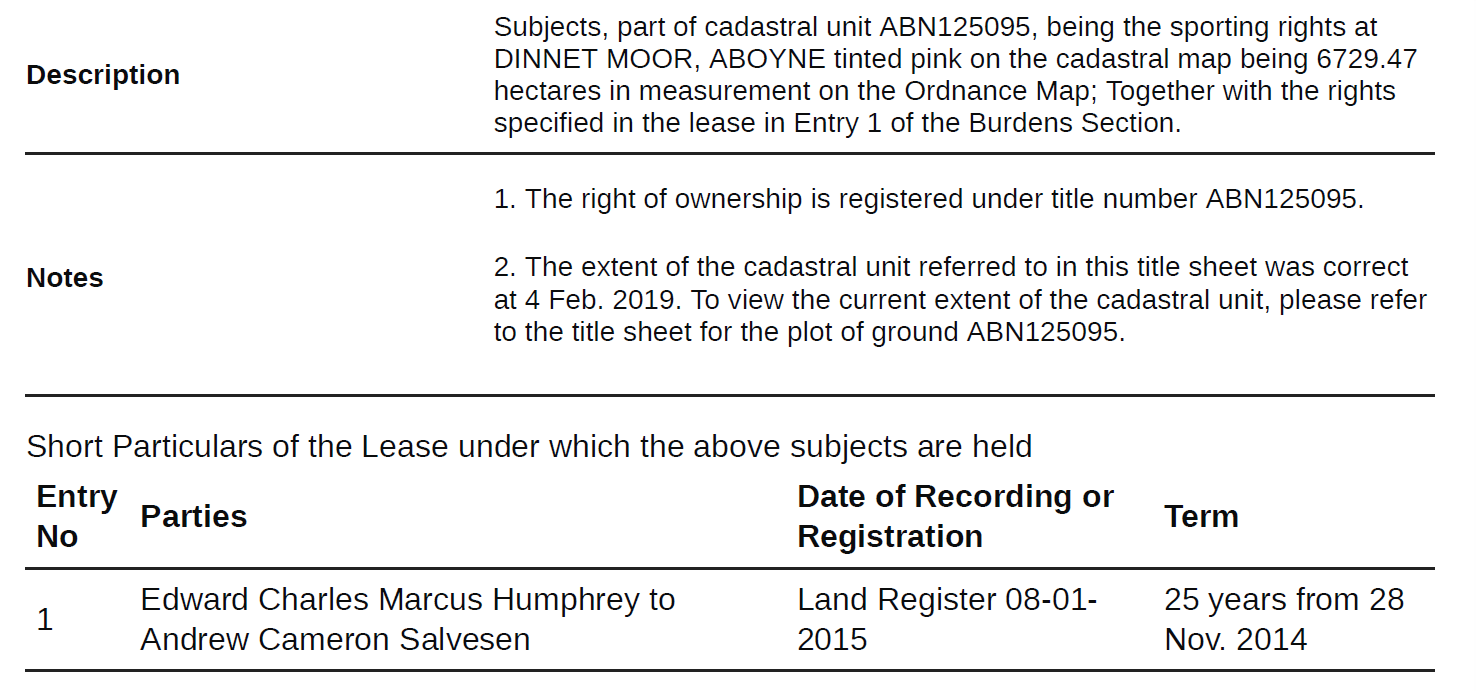
The lease itself, however, does not appear to be available from the Land Registry. One can only assume from what has happened at the Lary Burn that it allows Mr Salvesen considerable leeway to manage the land as he wishes, with little consideration of the public interest. In my view no estate owners in our National Parks should be allowed to lease large areas of land to tenants unless those leases incorporate the statutory objectives of the National Park and the need for landscape scale conservation. The law should be changed so our National Park Authorities are given a duty to vet leases as well as land purchases (see here).
The Dinnet Moor lease, however, raises wider issues. While the Registers of Scotland states the lease is with “ANDREW CAMERON SALVESEN trading as DINNET MOOR having place of business at 17 Albert Street, Aberdeen, AB25 1XX” I could find no such company or other legal entity with that name registered at Companies House.
Mr Salvesen was, however, until December (when his son replaced him) a Director of Findrack Investments Ltd:
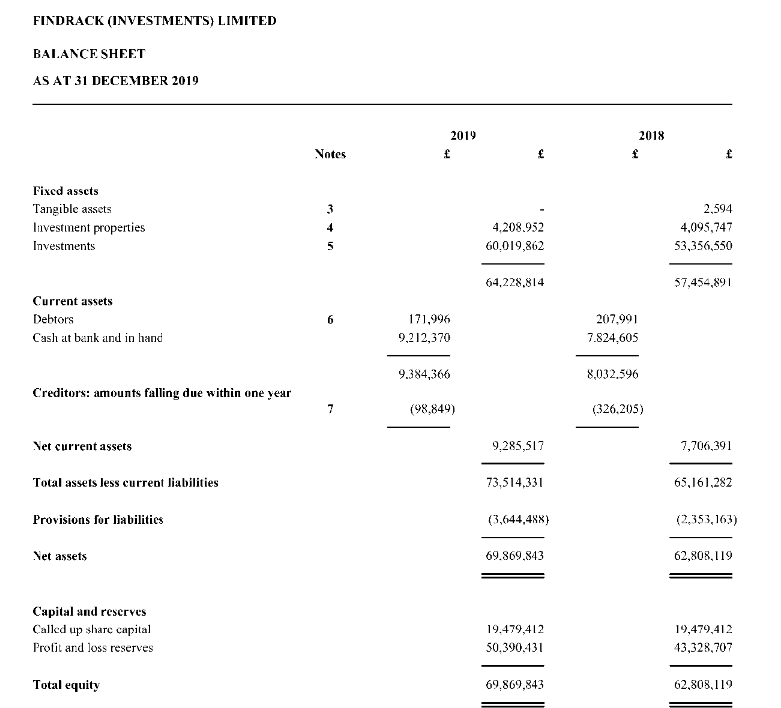
While having assets of almost £70 million, the accounts are treated as those of a small company and the Directors have chosen not to provide a profit and loss account, which makes it difficult to understand why the value of the company’s assets increased by £7m in a year. However, under Note 9 the following is noted as a future liability:

The 25 year lease expiring in 2040 suggests that this is the lease for Dinnet Moor. If so, Mr Salvesen has been paying £38k a year for the sporting rights through his company Findrack Investments,
It’s impossible to tell from the accounts, and I don’t know enough about tax law, but the inclusion of such a lease in an investment company raises questions about whether somehow, quite legitimately, the cost of grouse shooting for personal pleasure is being offset against other tax liabilities? If so, our tax system would appear to be supporting intensive grouse moor management and the destruction of the natural environment.
In January Prince Charles launched his Terra Carta initiative to create fundamental rights for nature (see here). Perhaps it’s time he spoke to his friend across the River Dee from Balmoral about how he manages Dinnet Moor?

What constitutes a large area of land for lease?
For a Glasgow resident with its many resplendent natural green areas, I joke, then 1 acre or 1500 acres.
Sad to see pictures of the felled and burnt areas. I used to live very near to this hill, one that offers so much opportunity for landscape scale conservation. There are a number of burns such as the Lary Burn that drain the lower slopes of the hill. My favourite ascent was via Tullich Burn from the south, partly because it holds a bit of woodland and scrub before reaching the green bowl below the main part of the hill. It is a hill that holds quite a bit of juniper, perhaps helped by a band of rock that runs through the hill with more nutrients than the surrounding geology. The area has so much potential but I largely witnessed deterioration with increased bulldozed tracks, increased burning and what appeared to me (as someone who walked the hill almost weekly) a pretty steep reduction in Mountain Hares. National Parks have a duty to enhance as well as conserve. However in the widest land management sense that could achieve landscape scale enhancement little seems to be happening around Morven.
Yes, and the muirburn season is getting into full swing again in the Cairngorms National Park area. We were walking in the hills west of Grantown on Spey today – gloriously clear and sunny day, marred by at least three large visible palls of muirburn smoke. We are sad to see the Amazon rainforest on fire, but we seem to tolerate this pollution and destruction of habitat on our doorstep.
I was in the area too, around glenlivet and Tomintoul. The fires appeared to be within the national park areas on the glenlivet (crown) estate. Also two large visible traps feet from the roadside on the way in to Tomintoul. The destruction of upland Scotland continues. No doubt we will see reports of out of control moorland fires being extinguished by fire crews with ‘the help of estate workers’ (who obviously started it). Why is the obvious cause never reported in the press and why do the estates not have to pay for the resources involved in controlling and extinguishing the fires they start?
“There is clearly enormous potential to create a montane scrub zone, a habitat almost entirely absent from Scotland” this should have read….”There is clearly enormous potential to recreate a montane scrub zone, a habitat almost entirely extinct from Scotland”. The habitat has been removed by management.
The issue that you have overlooked is that the most significant moorland management tool is burning. This should be undertaken in line with the muirburn code. The agricultural grant schemes which are often misused to support this grouse management are conditional on an adherence to the code. However, as your photos show, the code is rarely followed and there is no effective enforcement to reclaim the public funds.
There were loads of fires being set in Strathspey on Monday and Tuesday during the fine weather, Drumochter N through Cuaich, Phoines, Crubenmore etc.
Both Banchor and Pitmain estates set fires this week in various locations going ever higher up the hillsides above Newtonmore and Kingussie. The Calder is being grant aided for a woodland restoration scheme for native trees down in the glen yet up above the muirburn becomes more and more intense year on year. Where is the logic in this from an environmental viewpoint, and is it a waste of valuable grant aid for tree planting where the money might be more wisely spent elsewhere in the national park? As far as I can see this is more “greenwash” providing positive spin for grouse shooting which is what the estates are really interested in. Carbon storage and climate change are putting pressure on the driven grouse shooting industry so they scrabble to provide positive stories to offset the environmental damage that underpins their industry.
I wonder what’s the thought on the snow factory blasting out diesel fumes high up on Cairngorm for months on end 24 hrs a day just to make a patch of snow, i know it’s been switched off due to the covid regs but surely that should be scrapped, it also draws gallons of water 24hrs from the burn every day while running nothing said….. because it’s skiing.
To make it cost effective you would need thousands of skiers on that patch of snow everyday.
I don’t know if they now use bio fuel now but it was diesel.
Yes, diesel snow factories are very polluting, which is why Save the Ciste’s original proposals for a snow factory was linked to installation of run of river hydro at Cairn Gorm. That would not have been simple – it would have needed to be really well designed and excellent contractors to avoid damage – but HIE showed no interest until after the Feed In Tariff subsidy regime had expired and then claimed it was too expensive. Set aside the snow factory, ski uplift all uses a lot of power and hydro could have helped with that too. Nick
Living in the shadow of Morven we are currently subjected to a daily smog as the effects of burning hang over the valley. Seems to have been going on for weeks.
Local speak is the Dinnet Muir lease is no longer with Salvesen but Tillypronie. If true this is not positive news as their management style seems to be very much in the past along the lines of cut everything down or shoot anything that moves in order to keep everything tidy and controlled. Far from the rewilding agenda others are moving towards.